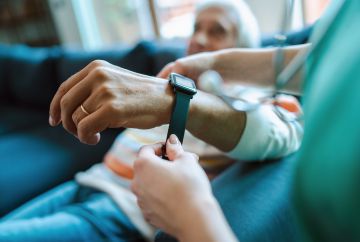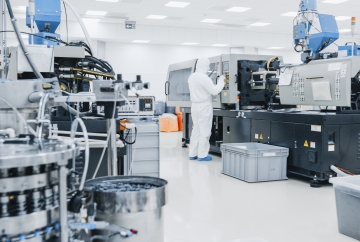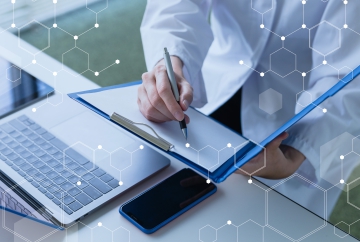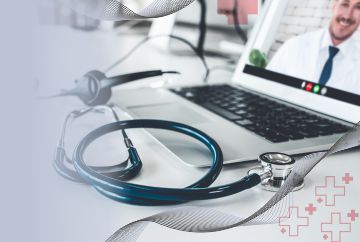IoMT Trends and Challenges
IoMT is being looked at to solve the data-analytics crisis in the healthcare industry. At the same time, it's also plagued with concerns that challenge its long-term growth. All in all, IoMT is currently being looked at as a tool to unlock the hidden potential of patient data.
IoMT Trends
IoMT is here to stay. Research from Deloitte UK's center for health solutions shows that the market for IoMT is expected to grow to nearly $160 Billion by 2022 and that the percentage of IoMT devices in use, as well as the R&D allocation budget, is only going to be increasing in the next five years.
However, one of the most promising applications of IoMT seems to be in medical research. The average clinical trial already costs a whopping $30-$40 million. It faces problems at every stage, which could be solved using IoMT medical devices such as activity trackers, smart pills, etc.
IoMT Challenges
As with every emergent technology in the digital space, IoMT is rife with concerns related to its viability, feasibility, applications, etc. The greatest challenge to IoMT adoption is cyber security. Given that IoMT smart devices hold crucial patient data, manufacturers need to adopt the most stringent security protocols to alleviate the concerns of patients and doctors alike.
Other barriers to adoption follow from cybersecurity, such as regulatory changes and winning and retaining patient trust in the digital age, given the high instances of cybercrimes in recent times. The industry also grappled with a talent shortage that might create potential supply-side issues.
Internet of Medical Things Market
The IoMT market is closely linked with the growth of the healthcare industry and the Internet of things (IoT) market. An aging population in most developed countries means that the demand for healthcare, specifically geriatric healthcare, is only going to increase in the future. As for the IoT market, growth between 2013-2014 alone was 160% and is expected to maintain a steady 30% YoY growth well into 2025.
The conclusion is clear. The rising prospects of senior care, coupled with the falling costs of IoT components, means that the healthcare industry is likely to invest heavily in point-of-care devices in a bid to increase their reach.
IoMT Market Size
The market size for IoMT is staggering. Spanning the entire world, Deloitte's prediction of it being a $160 billion market by 2022 is on track. However, given the infrastructural requirements for making IoMT feasible, there are regional variations in market potential. For North America, Europe, and Asia-Pacific, the predictions are as follows:
- North America: $13 billion - $45 billion
- Europe: $12 billion - $44 billion
- Asia-Pacific: $11 billion - $51 billion
For the rest of the world, which compromises markets that aren't as digitally mature, the prospects are slightly duller:
- South America: $2 billion - $9 billion
- The Middle East and Africa: $2 billion - $9 billion
Internet of Medical Things Examples
With IoMT, there is a digital equivalent to almost every function in health care. From relaying heart rate and blood pressure readings wirelessly to baseline activity tracking, the possibilities are endless. Some of the most common implementations of IoMT are:
Remote patient monitoring
Worldwide travel restrictions were the norm for much of 2020 and 2021, and remote patient monitoring took off in a way that no one expected. By equipping patients with healthcare IoT based monitoring systems, the need to visit healthcare facilities was eliminated, and doctors could reliably serve patients in remote locations.
Improving vaccine conditions
In less-developed countries, particularly in rural areas, the administration of disease-and-life-saving injections can be a challenge when refrigerators are prone to malfunction. Companies like Nexleaf are working on solutions to remotely track the temperatures of vaccine refrigerators via a sensor for the perusal of public health workers.
Productizing health insurance
In some markets, health insurance is being built into a platform sold as a bundled solution to corporate groups seeking to simplify health insurance for their employees. This trend is already playing out in India and is likely to be replicated across less mature markets.
IoMT Applications
The scope for IoMT applications is huge. It spans the entirety of healthcare operations: medical care, medical data, clinical research, patient diagnostics are areas that have direct and immediate possibilities for application.




